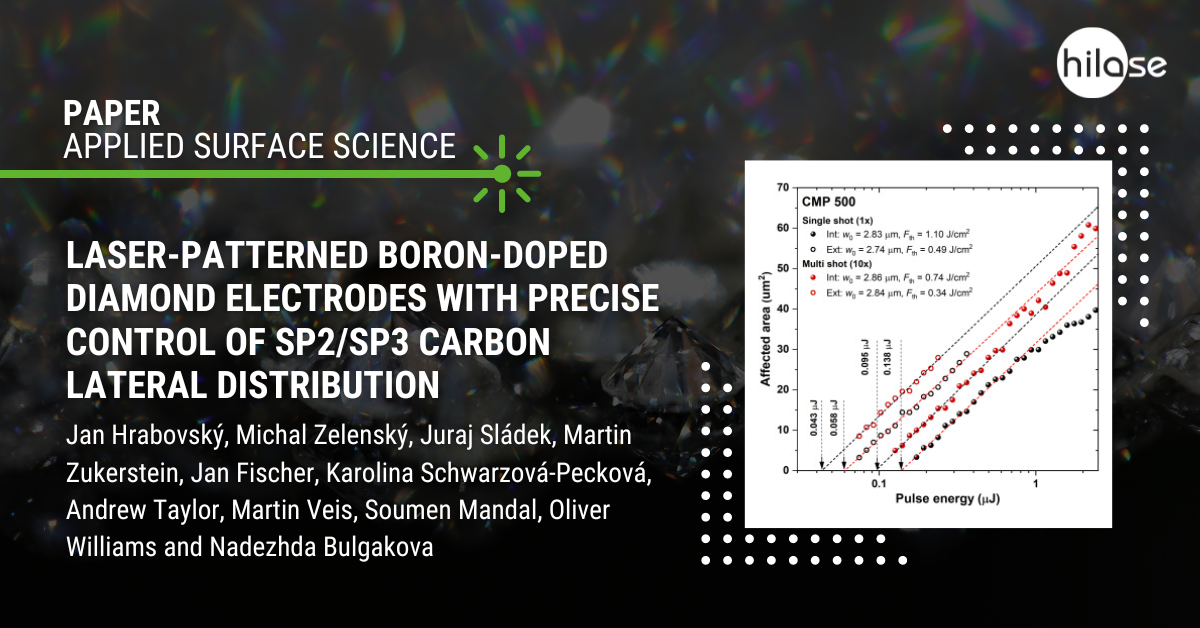HiLASIANS Jan Hrabovský, Juraj Sládek, Martin Zukerstein, and Nadezhda Bulgakova from the Scientific Laser Applications (SLA) department contributed to a newly published paper in the Applied Surface Science journal.
The study on the topic of Laser-patterned boron-doped diamond electrodes with precise control of sp2/sp3 carbon lateral distribution was conducted in collaboration with Michal Zelenský, Jan Fischer, Karolina Schwarzová-Pecková and Martin Veis from the Charles University, Andrew Taylor from the Institute of Physics of the CAS, and Soumen Mandal and Oliver Williams from Cardiff University.

A thorough study on sp3 to sp2 carbon conversion in undoped and boron-doped diamond (BDD) thin (≈ 500 nm) layers leading to the desired sp2/sp3 carbon ratio and lateral distribution, which utilizes boron atom incorporation and infrared (IR) material laser processing has been performed. Polycrystalline as-grown (AG) or chem-mechanically polished (CMP) undoped diamond/BDD layers were investigated with respect to boron content and laser wavelength (800, 1030 nm). Boron incorporation leads to an increase in IR optical absorption and reduction of required energy fluence (?th ≈ 1 J cm−2 ) needed for sp3 to sp2 carbon conversion. Raman spectroscopy was performed to identify carbon conversion stages and to tailor the ideal parameters for other IR laser sources and required sp2/sp3 carbon ratio. Electrochemical parameters (??p and ?Ap/?Cp ratio) were obtained from cyclic voltammetry measurements of outer-([Ru(NH3 )6 ] 3+/2+) and inner-([Fe(CN)6 ] 3−/4−) sphere redox markers. Values of ??p and ?Ap/?Cp are mainly influenced after conversion of 10% of sp3 to sp2 carbon. This trend is most pronounced for the [Fe(CN)6 ] 3−/4− redox marker, by decrease or increase of these parameters on AG or CMP BDD electrodes respectively. Electrochemical findings were supported by electrochemical impedance spectroscopy where ?ct keeps the same trend as ??p values and double layer capacitance profoundly increases between 10 and 25% of surface conversion.








